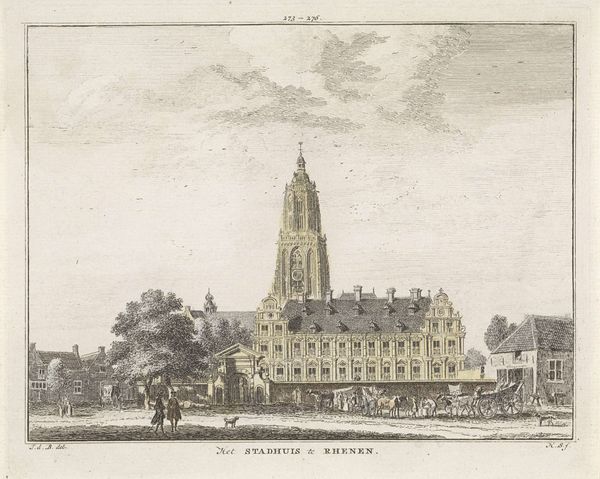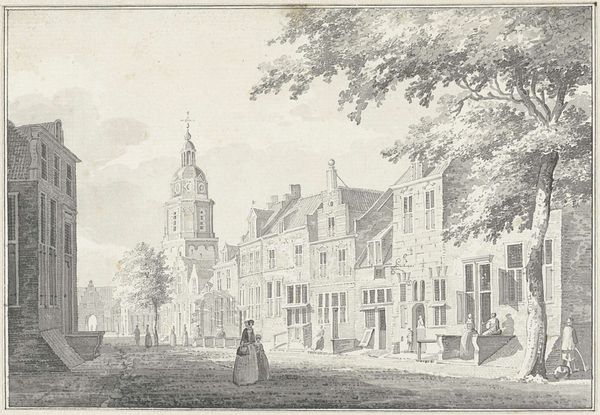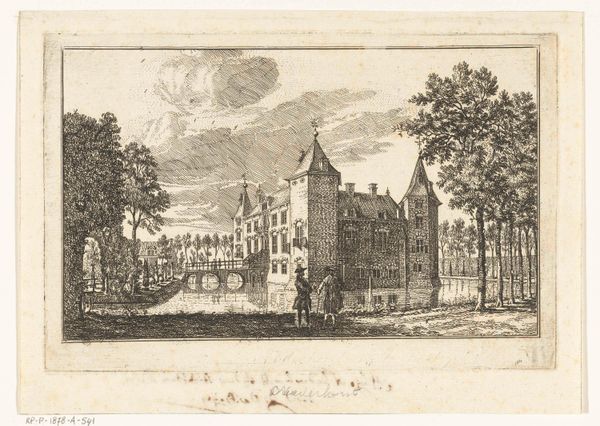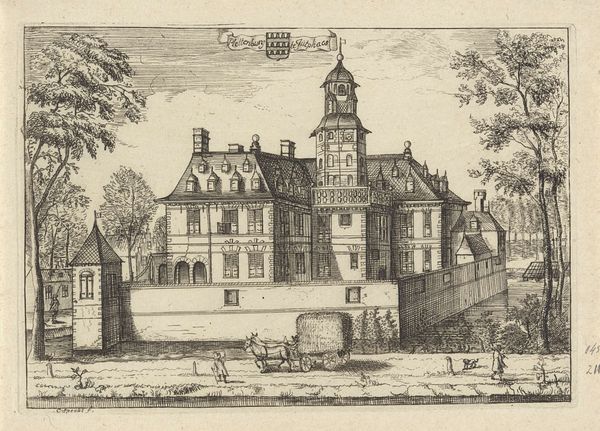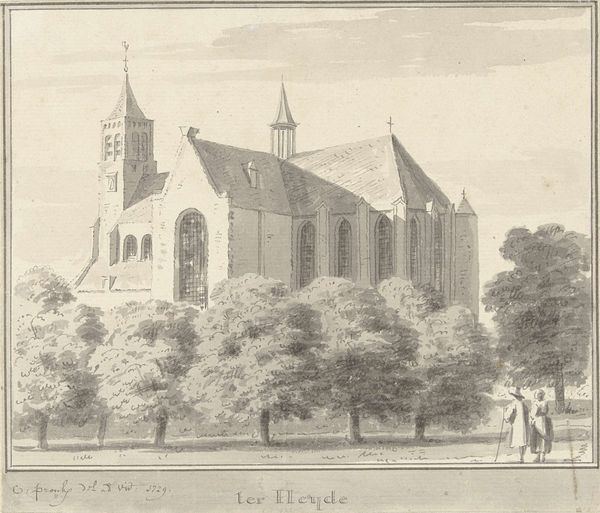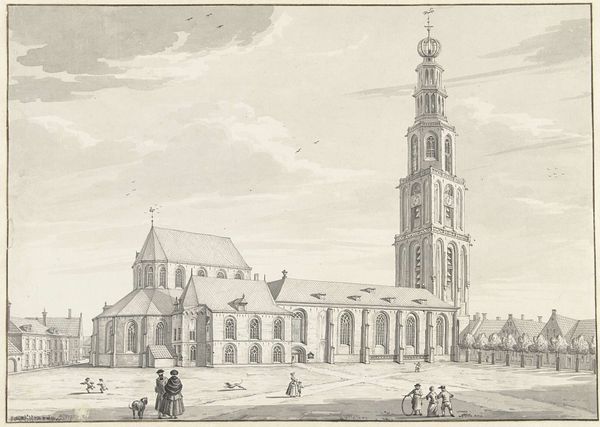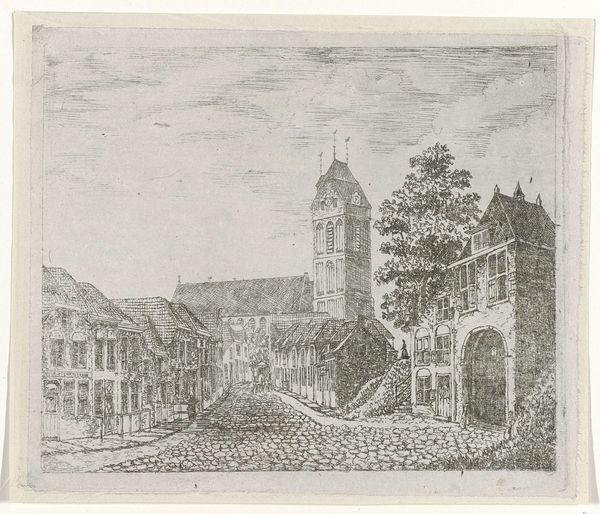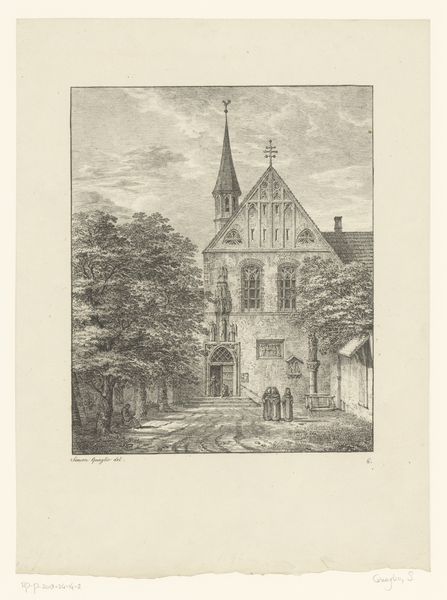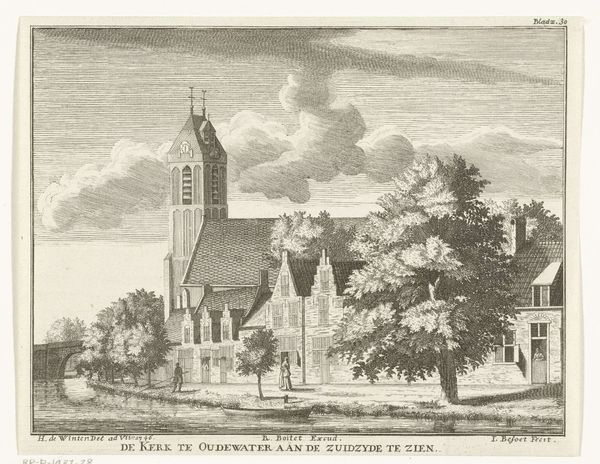
Dimensions: height 231 mm, width 266 mm
Copyright: Rijks Museum: Open Domain
Hendrik Hoogers created this wash drawing, “The Koningshuis and the Cunera Tower at Rhenen,” sometime in the late eighteenth century. The image shows the Koningshuis, a palace built by Frederick V, Elector Palatine, next to the Cunera Church tower. This drawing offers insight into the cultural and political landscape of the Netherlands during the late 1700s, a period marked by political and social upheaval. Note the imposing presence of the Cunera tower, a symbol of religious authority and civic pride in Rhenen. Juxtapose this with the Koningshuis, built by a foreign aristocrat in exile. The architecture, with its formal gardens, represents wealth and power. Hoogers’ decision to depict these two structures side-by-side invites questions about the shifting dynamics of power and influence in Dutch society. Does the church legitimize royal power, or vice versa? To understand this work fully, we can delve into the history of Rhenen, the biographies of Frederick V and Saint Cunera, and the architectural history of the Koningshuis. It is through such interdisciplinary research that art historians can illuminate the complex interplay between art, culture, and power.
Comments
No comments
Be the first to comment and join the conversation on the ultimate creative platform.
